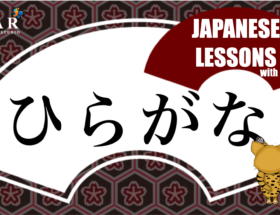Hi, ojachan is here 🙂 Today’s lesson is:【第13課】 Lesson 13. Watashi wa Tomodachi ga Hoshii desu
Don’t you want to know how to learn Japanese like Japanese kids? This lesson is meant for students that are beginners at Japanese.
⭐️This lesson is following the textbook “Minna no Nihongo”. (*not perfectly)
⭐️I’m going to give a lesson easier to understand for Japanese learners without following textbook’s orders.
Let’s learn how to say “want” in a sentence today.
I’m going to describe the detail because the usage of the grammar and parts of speech of “Want” in Japanese are quite different from English.
Let’s get started!
CONTENTS
■ Basic Patterned Sentences
1. わたしは Nが 欲しいです。
Though “want” is a verb in English, it is an i-adjective in Japanese.
When we want to say “ I want sth / sb” in Japanese, we use “欲しい”.
However, it is limited to the person used for the subject by an affirmative sentence, a negative sentence, or an interrogative sentence.
| sentence | 1st person | 2nd person | 3rd person |
|---|---|---|---|
| Affirmative | ○ | × | × |
| Negative | ○ | × | × |
| Interrogative | × | ○ | ○ |
■ Affirmative Sentence
| わたしは 日本人の 友達が 欲しいです。 watashi wa nihonjin no tomodachi ga hoshii desu I want Japanese friends. |
If you use this sentence pattern in affirmative sentence with the 2nd and 3rd person, it’s a bit strange expression for us.
Be careful because the subject always becomes “watashi” in this sentence pattern.
■ Negative Sentence
| わたしは 日本人の 友達は 欲しくありません。 watashi wa nihonjin no tomodachi ga hoshikuarimasen I don’t want any Japanese friends. |
Have you noticed the particle wa in “友達は”?
This は can distinguish the others.
You can learn the detail of the difference between wa and ga in this article.
■ Interrogative Sentence
| あなたは 日本人の 友達が 欲しいですか。 anata wa nihonjin no tomodachi ga hoshii desuka Do you want Japanese friends? はい、欲しいです。 hai hoshii desu Yes, I do. いいえ、欲しくありません。 iie hoshikuarimasen No, I don’t. |
you can use the 2nd person and the 3rd person in a negative sentence and an interrogative sentence.
■ Use the 3rd Person in an Affirmative Sentence
As mentioned previously, you can’t use the 3rd person in an affirmative sentence.
For example :
| Henry wants to have Japanese friends. ヘンリーは 日本人の 友達が 欲しいです。 |
If you translate English into Japanese directly, it becomes the impression that you labeled the intention of Henry. It’s not wrong grammatically but it sounds a bit strange for us.
If you want to use “欲しい” with the 3rd person, you can use it with “Jodoushi (an auxiliary verb) ” following “欲しい”.

| 中村さんは アメリカ人の友達が 欲しい そうです。 nakamura san wa amerikajin no tomodachi ga hoshii soudesu I heard that Nakamura wanted to have British friends. 中村さんは イギリス人の 友達が 欲しい みたいです。 nakamura san wa igirisujin no tomodachi ga hoshii mitai desu Nakamura seems to want to have British friends. 中村さんは オーストラリア人の 友達が 欲しい ようです。 nakamura san wa oostrariajin no tomodachi ga hoshii you desu Nakamura seems to want to have Australian friends. 中村さんは カナダ人の 友達が 欲しい らしいです。 nakamura san wa kanadajin no tomodachi ga hoshii rashii desu I’ve heard that N wakamura ants to have Canadian friends. |
Read “the usage of ga” if you want to know the reason why it’s “友達が”.
2. V (masu-form) +たいです。
You can express “ I want to do (sth).” in Japanese by using “V (masu-form) + たいです”.
| わたしは 日本へ 行きたいです。 watashi wa nihon e iki taidesu I want to go to Japan. わたしは 自分の 国に 帰りたくありません。 watashi wa jibun no kuni ni kaeri takuarimasen I don’t want to go back to my home country. あなたは 日本に 住みたいですか。 anata wa nihon ni sumi taidesuka Do you want to live in Japan? |
Words of Verb masu-form
I’m going to introduce to you Verbs with masu – form.
There are 6 steps of verb conjugation but let’s learn them step by step.
Take it easy!
| jisho – form | masu-form | English |
|---|---|---|
| 遊ぶ asobu | 遊び aobisto | have a good time |
| 泳ぐ oyogu | 泳ぎ oyogito | to swim |
| 迎える mukaeru | 迎え mukae | to welcome |
| 疲れる tsukareru | 疲れ tsukare | to get tired |
| 結婚する kekkonsuru | 結婚し kekkonshi | to get married |
| 買い物する kaimonosuru | 買い物し kaimonoshi | to go shopping |
| 食事する shokujisuru | 食事し shokujishi | to eat (formal) |
| 散歩する sanposuru | 散歩し sanposhi | to take a walk |
Indefinite Pronoun Words
You can use these expression if you don’t know what you want particularly.
It is called “不定代名詞 Futeidaimeishi Indefinite pronoun” in Japanese.
■ In an Affirmative and an Interrogative Sentence
| わたしは 何か 食べ たいです。 watashi wa nanika tabe taidesu I want eat something. どこかで 何か 食べ たいですか。 dokoka de nanika tabe taidesuka Do you want to eat anything anywhere? |
| language | things | person | place | time |
|---|---|---|---|---|
| 日本語 | 何か | 誰か | どこか | いつか |
| pronunciation | nanika | dareka | dokoka | itsuka |
| English | something anything | someone anyone | somewhere anywhere | sometime someday |
■ In a Negative Sentence
| わたしは 何も 食べ たくありません。 watashi wa nanimo tabe takuarimasen I don’t want eat anything. |
| language | things | person | place | time |
|---|---|---|---|---|
| 日本語 | 何も~ありません | 誰も~いません | どこも~ません | いつも~ません |
| pronunciation | nanimo~arimasen | daremo~imasen | dokomo~masen | itusmo~masen |
| English | nothing | nobody | not ~ every (place) | not always ~ |
■ When You Want to Use “every”
| わたしは 何でも 食べ たいです。 watashi wa nandemo tabe taidesu I want eat anything. |
| language | things | person | place | time |
|---|---|---|---|---|
| 日本語 | 何でも | 誰でも | どこでも | いつでも |
| pronunciation | nandemo | daredemo | dokodemo | itsudemo |
| English | anything / everything | anyone everyone whoever | anywhere everywhere wherever | anytime always whenever |
Let’s Practice
Your Homework
✏️Answer these questions in Japanese and comment below.
| 1. あなたは 今 何が 欲しいですか。 |
| 2. あなたは どこに 行き たいですか。 |
Okay, that’s all for today!
Good luck with your Japanese study 😉
*MINNA NO NIHONGO,VOL.1-W/CD*
| Amazon Reviews: | ★★★★★ |
|---|
Publisher:3 A corporation (2nd Edition)
P.S. My English skill is not enough yet. Please correct me with DM from CONTACT if my English is wrong. Thank you for your cooperation!
Next Lesson is;
Minna no Nihongo 21:Watashi wa Onigiri wo Kai ni Ikimasu
Previous Lesson is; CLICK HERE!
Minna no Nihongo 19: Natsu wa Fuyu yori Atsui desu











